Provisional government
A provisional government, also called an interim government, an emergency government, or a transitional government,[1] is an emergency governmental authority set up to manage a political transition generally in the cases of new nations or following the collapse of the previous governing administration. Provisional governments are generally appointed, and frequently arise, either during or after civil or foreign wars.
| Part of the Politics series | ||||
| Basic forms of government | ||||
|---|---|---|---|---|
.svg.png.webp) | ||||
| Power source | ||||
|
|
||||
| Power ideology | ||||
|
|
||||
| Power structure | ||||
|
|
||||
|
| ||||
Provisional governments maintain power until a new government can be appointed by a regular political process, which is generally an election.[2] They may be involved with defining the legal structure of subsequent regimes, guidelines related to human rights and political freedoms, the structure of the economy, government institutions, and international alignment.[3] Provisional governments differ from caretaker governments, which are responsible for governing within an established parliamentary system and serve as placeholders following a motion of no confidence, or following the dissolution of the ruling coalition.[3]
In opinion of Yossi Shain and Juan J. Linz, provisional governments can be classified to four groups:[4]
- Revolutionary provisional governments (when the former regime is overthrown and the power belongs to the people who have overthrown it).
- Power sharing provisional governments (when the power is shared between former regime and the ones who are trying to change it).
- Incumbent provisional governments (when the power during transitional period belongs to the former regime).
- International provisional governments (when the power during the transitional period belongs to the international community).
The establishment of provisional governments is frequently tied to the implementation of transitional justice.[5] Decisions related to transitional justice can determine who is allowed to participate in a provisional government.
The early provisional governments were created to prepare for the return of royal rule. Irregularly convened assemblies during the English Revolution, such as Confederate Ireland (1641–49), were described as "provisional". The Continental Congress, a convention of delegates from 13 British colonies on the east coast of North America became the provisional government of the United States in 1776, during the American Revolutionary War. The government shed its provisional status in 1781, following ratification of the Articles of Confederation, and continued in existence as the Congress of the Confederation until it was supplanted by the United States Congress in 1789.
The practice of using "provisional government" as part of a formal name can be traced to Talleyrand's government in France in 1814. In 1843, American pioneers in the Oregon Country, in the Pacific Northwest region of North America established the Provisional Government of Oregon—as the U.S. federal government had not yet extended its jurisdiction over the region—which existed until March 1849. The numerous provisional governments during the Revolutions of 1848 gave the word its modern meaning: A liberal government established to prepare for elections.
List of provisional governments
Numerous provisional governments have been established since the 1850s.
Africa
As of 2020 in Africa, only Libya and Sudan still have provisional governments.
.svg.png.webp) Provisional Government of the Algerian Republic (1958–62) (guerrilla movement)
Provisional Government of the Algerian Republic (1958–62) (guerrilla movement) Transitional Government of National Unity (Namibia) (1985-1989)
Transitional Government of National Unity (Namibia) (1985-1989).svg.png.webp) Transitional Government of Ethiopia (1991–1995)
Transitional Government of Ethiopia (1991–1995) Provisional Government of Eritrea (1993)
Provisional Government of Eritrea (1993) Transitional Government of the Democratic Republic of the Congo (2003-2006), established in 2003 following the conclusion of the Second Congo War
Transitional Government of the Democratic Republic of the Congo (2003-2006), established in 2003 following the conclusion of the Second Congo War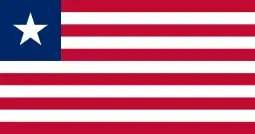 National Transitional Legislative Assembly of Liberia (2003–2006), Liberia's legislative body during the country's transition from civil war to democratic rule
National Transitional Legislative Assembly of Liberia (2003–2006), Liberia's legislative body during the country's transition from civil war to democratic rule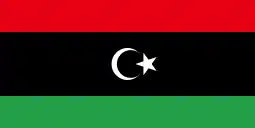 National Transitional Council of Libya (2011-2012), formed during the 2011 civil war in Libya against the Gaddafi-led government
National Transitional Council of Libya (2011-2012), formed during the 2011 civil war in Libya against the Gaddafi-led government Interim government of Egypt (2013–2014)
Interim government of Egypt (2013–2014) The UN-supported Government of National Accord for Libya (2016–present), formed in 2016 and remaining active until now
The UN-supported Government of National Accord for Libya (2016–present), formed in 2016 and remaining active until now Sovereignty Council of Sudan (2019–present), established in August 2019 after 8 month-long protests against President Bashir and the subsequent military coup
Sovereignty Council of Sudan (2019–present), established in August 2019 after 8 month-long protests against President Bashir and the subsequent military coup
Asia
.svg.png.webp) Provisional Government of the Republic of China (1912), established after the success of the Wuchang uprising.
Provisional Government of the Republic of China (1912), established after the success of the Wuchang uprising.
World War I and Interbellum
- Provisional Government of India (1915), established in Kabul.
- Republic of Van (1915), established in Western Armenia.
 South West Caucasian Republic (1919), established in Kars.
South West Caucasian Republic (1919), established in Kars.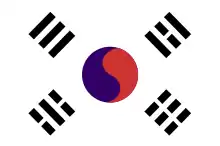 Provisional Government of the Republic of Korea (1919), established in exile based in Shanghai, China and later in Chongqing, during the Japanese occupation of Korea.
Provisional Government of the Republic of Korea (1919), established in exile based in Shanghai, China and later in Chongqing, during the Japanese occupation of Korea..svg.png.webp) Government of the Grand National Assembly (1920-1923)
Government of the Grand National Assembly (1920-1923)
World War II
.svg.png.webp) Provisional Government of the Republic of China (1937–40), established by the Empire of Japan when invading Eastern China.
Provisional Government of the Republic of China (1937–40), established by the Empire of Japan when invading Eastern China. Provisional Government of Free India (1943–1945), commonly known as Azad Hind, established by Indian nationalists in southeast Asia, had nominal sovereignty over Axis controlled Indian territories, and had diplomatic relationships with eleven countries including Germany, Italy, Japan, Philippines, Soviet Russia. It was headed by Netaji Subhas Chandra Bose, who was the Head of the State and Prime Minister. He was also the Supreme Commander of the Indian National Army. The government had its own cabinet and banks. It was also the first government to recruit women for combat roles.
Provisional Government of Free India (1943–1945), commonly known as Azad Hind, established by Indian nationalists in southeast Asia, had nominal sovereignty over Axis controlled Indian territories, and had diplomatic relationships with eleven countries including Germany, Italy, Japan, Philippines, Soviet Russia. It was headed by Netaji Subhas Chandra Bose, who was the Head of the State and Prime Minister. He was also the Supreme Commander of the Indian National Army. The government had its own cabinet and banks. It was also the first government to recruit women for combat roles.
Cold War and aftermath
 Interim Government of India (1946–1947), an interim government formed by the newly created Constituent Assembly of India to administer what would become the Dominion of India and the Dominion of Pakistan in the transitional period between British rule and independence.
Interim Government of India (1946–1947), an interim government formed by the newly created Constituent Assembly of India to administer what would become the Dominion of India and the Dominion of Pakistan in the transitional period between British rule and independence. Provisional government of Israel (1948–49), established after Israel's declaration of independence and in place until after the first Knesset elections.
Provisional government of Israel (1948–49), established after Israel's declaration of independence and in place until after the first Knesset elections. Provisional Central Government of Vietnam (1948-1949), established as a puppet government by French during the First Indochina War.
Provisional Central Government of Vietnam (1948-1949), established as a puppet government by French during the First Indochina War. Provisional Government of the Syrian Arab Republic (1949), established by national consensus to draft a new constitution and reintroduce civilian rule after a series of military governments.
Provisional Government of the Syrian Arab Republic (1949), established by national consensus to draft a new constitution and reintroduce civilian rule after a series of military governments. Provisional Revolutionary Government of the Republic of South Vietnam (1969–1976), established during the Vietnam War against America and Republic of Vietnam
Provisional Revolutionary Government of the Republic of South Vietnam (1969–1976), established during the Vietnam War against America and Republic of Vietnam.svg.png.webp) Provisional Government of the People's Republic of Bangladesh (1970–1972), established after the declaration of freedom of Bengalis exiled to Calcutta.
Provisional Government of the People's Republic of Bangladesh (1970–1972), established after the declaration of freedom of Bengalis exiled to Calcutta..svg.png.webp) Interim Government of Iran, a provisional government established after the 1979 Iranian Revolution
Interim Government of Iran, a provisional government established after the 1979 Iranian Revolution Executive Committee of the Palestine Liberation Organization (1988–), after it was entrusted with the powers and responsibilities of the Provisional Government of the State of Palestine.[6][7]
Executive Committee of the Palestine Liberation Organization (1988–), after it was entrusted with the powers and responsibilities of the Provisional Government of the State of Palestine.[6][7]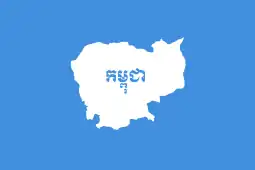 United Nations Transitional Authority in Cambodia (1992–1993)
United Nations Transitional Authority in Cambodia (1992–1993) Palestinian National Authority (1994–), the administrative organization, established to govern parts of the West Bank and Gaza Strip, following the Oslo Accords.[8]
Palestinian National Authority (1994–), the administrative organization, established to govern parts of the West Bank and Gaza Strip, following the Oslo Accords.[8]
21st century
As of 2020 in Asia, only Syria and Yemen still have provisional governments. However the 2 provisional governments of Syria were established as umbrella governments of the oppositions, in parallel with a pre-existent internationally recognized government; both provisional governments are not recognized internationally.
.svg.png.webp) Coalition Provisional Authority in Iraq (2003–2004) with the Iraqi Interim Governing Council, established to act as a caretaker administration in Iraq following the 2003 invasion of Iraq pending the hand over of power to the Iraqi people and the creation of a democratically elected civilian government.
Coalition Provisional Authority in Iraq (2003–2004) with the Iraqi Interim Governing Council, established to act as a caretaker administration in Iraq following the 2003 invasion of Iraq pending the hand over of power to the Iraqi people and the creation of a democratically elected civilian government.- Iraqi Interim Government (2004-2005) and the Iraqi Transitional Government (2005-2006) were both provisional authorities established after the hand over of power to the Iraqi people following the 2003 invasion of Iraq to govern pending the adoption of a permanent constitution.
 Syrian Interim Government (2013–present)
Syrian Interim Government (2013–present)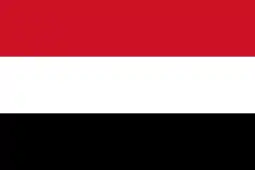 Supreme Political Council of Yemen (2015–present), established by the Houthi Movement after the 2014–15 Yemeni coup d'état, currently participating in the Yemeni Civil War (2014–present) against the Pro-Hadi Government
Supreme Political Council of Yemen (2015–present), established by the Houthi Movement after the 2014–15 Yemeni coup d'état, currently participating in the Yemeni Civil War (2014–present) against the Pro-Hadi Government Syrian Salvation Government (2017–present)
Syrian Salvation Government (2017–present) Southern Transitional Council of South Yemen (2016–present), established by the Southern Movement - a separatist group in southern Yemen - during the Yemeni Civil War (2014–present)
Southern Transitional Council of South Yemen (2016–present), established by the Southern Movement - a separatist group in southern Yemen - during the Yemeni Civil War (2014–present)- Etat Pied-Noir (community government owned by all Pieds-noir and a selected president rules in this Pied Noir government)
 Interim government of Kyrgyzstan (2020-2021), established in 2020 in the aftermath of 2020 Kyrgyzstani protests
Interim government of Kyrgyzstan (2020-2021), established in 2020 in the aftermath of 2020 Kyrgyzstani protests
Europe
.svg.png.webp) Provisional Government of Spain (1868–1871), pending the election of a new Constitutional Monarch.
Provisional Government of Spain (1868–1871), pending the election of a new Constitutional Monarch.
World War I and Interbellum
.svg.png.webp) Provisional Government of Albania (1912–14).
Provisional Government of Albania (1912–14). Provisional Government of Western Thrace (1913), established in modern Greece in opposition to annexation by Bulgaria during the Second Balkan War.
Provisional Government of Western Thrace (1913), established in modern Greece in opposition to annexation by Bulgaria during the Second Balkan War. Provisional Government of Northern Epirus (1914), established against annexation to Albania.
Provisional Government of Northern Epirus (1914), established against annexation to Albania. Provisional Government of the Irish Republic (1916), a title adopted by the leadership of the short-lived Easter Rising.
Provisional Government of the Irish Republic (1916), a title adopted by the leadership of the short-lived Easter Rising..svg.png.webp) Provisional Government of National Defence (northern Greece), 1916
Provisional Government of National Defence (northern Greece), 1916 Russian Provisional Government (1917), established as a result of the February Revolution which led to the abdication of Tsar Nicholas II.
Russian Provisional Government (1917), established as a result of the February Revolution which led to the abdication of Tsar Nicholas II. State of Slovenes, Croats and Serbs, established in 1918 as the unrecognized first incarnation of Yugoslavia and later merged with the Kingdoms of Serbia and Montenegro to form the Kingdom of Serbs, Croats, and Slovenes.
State of Slovenes, Croats and Serbs, established in 1918 as the unrecognized first incarnation of Yugoslavia and later merged with the Kingdoms of Serbia and Montenegro to form the Kingdom of Serbs, Croats, and Slovenes. Estonian Provisional Government (1918–1919).
Estonian Provisional Government (1918–1919). Latvian Provisional Government (1918–1920).
Latvian Provisional Government (1918–1920). Ukrainian Provisional Government (1918).
Ukrainian Provisional Government (1918). Provisional Government of the Northern Region (1918-1920).
Provisional Government of the Northern Region (1918-1920). Provisional Government of Ireland (1922), established by agreement between the British government and Irish revolutionaries, in order to pave the way for the establishment of the Irish Free State in the same year.
Provisional Government of Ireland (1922), established by agreement between the British government and Irish revolutionaries, in order to pave the way for the establishment of the Irish Free State in the same year.
World War II
 Provisional Government of Lithuania (1941), established when Lithuanians overthrew the Soviet occupation during the Lithuanian 1941 independence. It functioned briefly until Nazi Germany annexed the country.
Provisional Government of Lithuania (1941), established when Lithuanians overthrew the Soviet occupation during the Lithuanian 1941 independence. It functioned briefly until Nazi Germany annexed the country..svg.png.webp) Provisional National Government of Hungary (1944–1945) (Ideiglenes Nemzeti Kormány).[9]
Provisional National Government of Hungary (1944–1945) (Ideiglenes Nemzeti Kormány).[9].svg.png.webp) Provisional Government of the Democratic Federal Yugoslavia (1945).
Provisional Government of the Democratic Federal Yugoslavia (1945)..svg.png.webp) French Committee of National Liberation (Comité Français de Libération Nationale, CFLN) (1943–44), set up in Algiers, then a part of metropolitan France.
French Committee of National Liberation (Comité Français de Libération Nationale, CFLN) (1943–44), set up in Algiers, then a part of metropolitan France..svg.png.webp) Provisional Government of the French Republic (GPRF) (1944–46), government of the provisional Republic until the establishment of the Fourth Republic.
Provisional Government of the French Republic (GPRF) (1944–46), government of the provisional Republic until the establishment of the Fourth Republic..svg.png.webp) Democratic Government of Albania (1944–46).
Democratic Government of Albania (1944–46)..svg.png.webp) Flensburg Government (1945), established following the suicides of Adolf Hitler and Joseph Goebbels during the closing days of the Third Reich.
Flensburg Government (1945), established following the suicides of Adolf Hitler and Joseph Goebbels during the closing days of the Third Reich.
Provisional governments were also established throughout Europe as occupied nations were liberated from Nazi occupation by the Allies.
Cold War
 Provisional Cypriot Turkish Administration[10] (1967-1971)
Provisional Cypriot Turkish Administration[10] (1967-1971)
Collapse of the USSR and aftermath
 Government of National Understanding, established in Czechoslovakia after the Velvet Revolution of 1989.
Government of National Understanding, established in Czechoslovakia after the Velvet Revolution of 1989. National Salvation Front, established in Romania after the fall of Nicolae Ceaușescu and the end of the Socialist Republic of Romania in 1989.
National Salvation Front, established in Romania after the fall of Nicolae Ceaușescu and the end of the Socialist Republic of Romania in 1989. Estonian Interim Government (1990–1992)
Estonian Interim Government (1990–1992)
21st century
As of 2020 in Europe, only Belarus still has a provisional government which is established by the oppositions in parallel with the government of the Republic of Belarus.
.svg.png.webp) /
/ Belarusian Coordination Council (2020–present), established during the 2020–21 Belarusian protests and the aftermath of the 2020 Belarusian presidential election. The transitional government is only supported and recognized by Lithuania.
Belarusian Coordination Council (2020–present), established during the 2020–21 Belarusian protests and the aftermath of the 2020 Belarusian presidential election. The transitional government is only supported and recognized by Lithuania.
Pacific Ocean
 Provisional Government of Hawaii (1893-1894), established in 1893 after the overthrow of the Kingdom of Hawaii and renamed to the Republic of Hawaii in 1894.
Provisional Government of Hawaii (1893-1894), established in 1893 after the overthrow of the Kingdom of Hawaii and renamed to the Republic of Hawaii in 1894.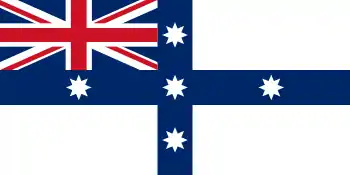 1901 caretaker government of Australia, established pending the first election to the newly established Commonwealth of Australia.
1901 caretaker government of Australia, established pending the first election to the newly established Commonwealth of Australia.
South America and the Caribbean Sea
As of 2020 in Americas, only Venezuela still has a provisional government which is established by the oppositions in parallel with the government of the Bolivarian Republic of Venezuela
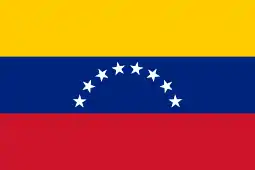 Venezuela transitional government (2019–present), established in January 2019 by Venezuelan Nation Assembly led by Juan Guaidó, currently in dispute with the incumbent government of the Bolivarian Republic of Venezuela led by Nicolás Maduro. The transitional government is supported and recognized by United States, European Union, Lima Group, and many other Western countries
Venezuela transitional government (2019–present), established in January 2019 by Venezuelan Nation Assembly led by Juan Guaidó, currently in dispute with the incumbent government of the Bolivarian Republic of Venezuela led by Nicolás Maduro. The transitional government is supported and recognized by United States, European Union, Lima Group, and many other Western countries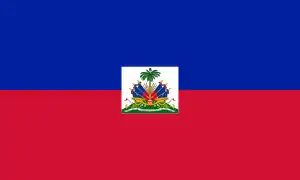 National Council of Government (1986–1988), interim ruling body of Haiti, after the departure of Jean-Claude Duvalier
National Council of Government (1986–1988), interim ruling body of Haiti, after the departure of Jean-Claude Duvalier
See also
References
- Google Ngram Viewer
- "caretaker government". Credo Reference. Dictionary of politics and government. Retrieved 18 December 2015.
- Shain(1) Linz(2), Yossi(1) Linz(2) (January 1992). "The Role of Interim Governments". Journal of Democracy. doi:10.1353/jod.1992.0012.
- Yossi Shain, Juan J. Linz, "Between States: Interim Governments in Democratic Transitions", 1995, ISBN 9780521484985 , p. 5
- McAuliffe, Padraig (09/01/2010). "Transitional Justice and the Rule of Law". ague Journal of the Rule of Law. doi:10.1017/S1876404510200015. Check date values in:
|date=(help) - Sayigh, Yezid (1999). Armed Struggle and the Search for State: The Palestinian National Movement, 1949–1993 (illustrated ed.). Oxford University Press. p. 624. ISBN 9780198296430. "The Palestinian National Council also empowered the central council to form a government-in-exile when appropriate, and the executive committee to perform the functions of government until such time as a government-in-exile was established."
- United Nations General Assembly Session 67 Resolution 19. A/RES/67/19 Retrieved 2013-01-07.
- "The Palestinian Authority".
- "The Provisional National Government (1945)". The Orange Files: Notes on Illiberal Democracy in Hungary. Retrieved 20 March 2017.